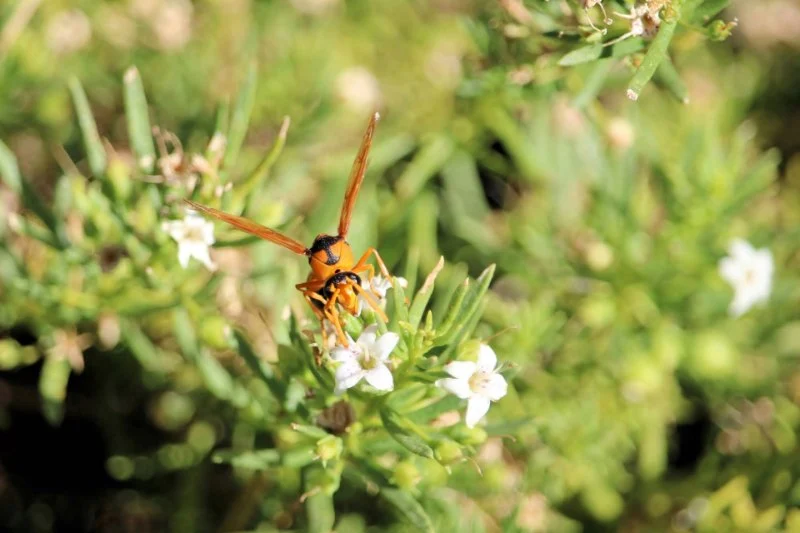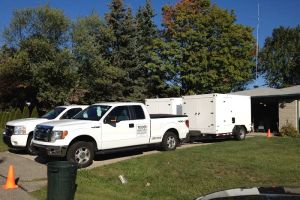
How to Remove Wasps Without Getting Stung
- 1. Understanding Wasp Behavior
- 2. Why You Should Remove Wasps
- 3. Safety Measures Before Removal
- 4. Effective Wasp Removal Methods
- 5. After Removal Tips and Prevention
1. Understanding Wasp Behavior
Before attempting to remove wasps, it's important to understand their behavior. Wasps are territorial creatures, and they tend to become more aggressive if they feel threatened. Typically, wasps build nests in hidden, undisturbed areas like under eaves, in attics, or in tree branches. Their primary role is to protect their nest, especially during warmer months when their colonies are most active.
Knowing how wasps behave can help you plan a safe and effective strategy for removal without provoking them. It's also important to note that while wasps are more active during the day, they are less active during the night, making evening or early morning the safest times for removal attempts.
2. Why You Should Remove Wasps
Removing wasps is essential for several reasons. Wasps can become a danger to your family, pets, and guests, especially if anyone is allergic to their stings. A wasp sting can cause severe allergic reactions, swelling, or even anaphylaxis in some individuals. Additionally, large wasp nests can attract other pests, further increasing the risk of infestation in your home.
While wasps are beneficial to the environment by controlling other pests, their presence near human dwellings can be a safety hazard. Therefore, it’s crucial to remove wasps in a way that ensures you don’t get stung while also minimizing the risk of them returning.

L/R Pest Elimination Services
Essex JunctionChittenden CountyVermont
5 Andrew Ave, Essex Junction, VT 05452, USA
3. Safety Measures Before Removal
Safety is the top priority when dealing with wasp removal. Here are some essential safety measures to consider:
- Protective Clothing: Always wear long sleeves, pants, gloves, and a hat to shield yourself from potential stings. A bee suit or thick jacket can offer extra protection.
- Stay Calm: Avoid swatting at the wasps. Rapid movements can provoke them. Move slowly and deliberately when approaching the nest.
- Choose the Right Time: As mentioned earlier, the best time for removal is at night or early morning when the wasps are less active. During these times, the majority of wasps will be inside the nest, reducing the chances of a defensive attack.
- Tools and Products: If you plan to use wasp spray or other removal products, ensure that they are specifically designed for wasp control. Read the labels carefully to ensure you're using them properly.
4. Effective Wasp Removal Methods
There are several ways to safely remove wasps from your property. Here are some effective methods:
- Wasp Spray: Commercial wasp sprays are designed to kill wasps from a safe distance. Aim the nozzle at the nest entrance and spray generously. Always follow the instructions on the label and avoid using the spray in windy conditions.
- Insecticidal Dust: This method is effective for larger nests, especially those hidden in walls or ceilings. The insecticidal dust clings to the wasps and kills them when they come into contact with it. Apply it during cooler hours to ensure maximum effect.
- Soap and Water Solution: For a more natural approach, a solution of soap and water can be used to suffocate wasps. Fill a spray bottle with soapy water and spray directly onto the nest. This method is less toxic and can be safer if you're concerned about using chemicals.
- Calling a Professional: If the nest is large or located in a difficult-to-reach area, it’s best to call a professional pest control service. They have the proper tools, experience, and safety equipment to remove the wasps without risk.
5. After Removal Tips and Prevention
Once you’ve successfully removed the wasps, there are a few steps you can take to ensure they don't come back:
- Seal Entry Points: Inspect your property for cracks and crevices where wasps could potentially re-enter. Seal any openings to prevent new nests from forming.
- Remove Food Sources: Wasps are attracted to food, especially sugary substances. Clean up outdoor eating areas and keep trash bins covered to avoid attracting new wasps.
- Monitor for New Nests: Even after removal, regularly check for new nests. Wasps can return to the same location, so it’s important to stay vigilant during the summer and fall months.
For more advice and products related to wasp control, visit PestControlHub. We offer a range of tools and expert services to help you safely manage pests around your home.








 Wildlife Resolutions4.0 (443 reviews)
Wildlife Resolutions4.0 (443 reviews) Pest Marshals of Toledo5.0 (2 reviews)
Pest Marshals of Toledo5.0 (2 reviews) LS Rodent Proofing & Pest Control Service5.0 (4 reviews)
LS Rodent Proofing & Pest Control Service5.0 (4 reviews) Best Termite & Pest Control4.0 (16 reviews)
Best Termite & Pest Control4.0 (16 reviews) Varment Guard Wildlife Services5.0 (28 reviews)
Varment Guard Wildlife Services5.0 (28 reviews) Pestban Inc4.0 (394 reviews)
Pestban Inc4.0 (394 reviews) How to Use Monitors to Detect Pest Entry: A Comprehensive Guide
How to Use Monitors to Detect Pest Entry: A Comprehensive Guide How to Predict Which Pests Will Invade Next – Smart Pest Forecasting for the U.S.
How to Predict Which Pests Will Invade Next – Smart Pest Forecasting for the U.S. How to Conduct a Pest Risk Assessment at Home – Expert Guide
How to Conduct a Pest Risk Assessment at Home – Expert Guide How to Block Pest Entry Around Deck Joists: Effective Solutions
How to Block Pest Entry Around Deck Joists: Effective Solutions How to Safely Use Fumigation Methods: A Comprehensive Guide for Homeowners
How to Safely Use Fumigation Methods: A Comprehensive Guide for Homeowners Why Pests Are More Active After Rain: Understanding the Link Between Weather and Pest Behavior
Why Pests Are More Active After Rain: Understanding the Link Between Weather and Pest Behavior